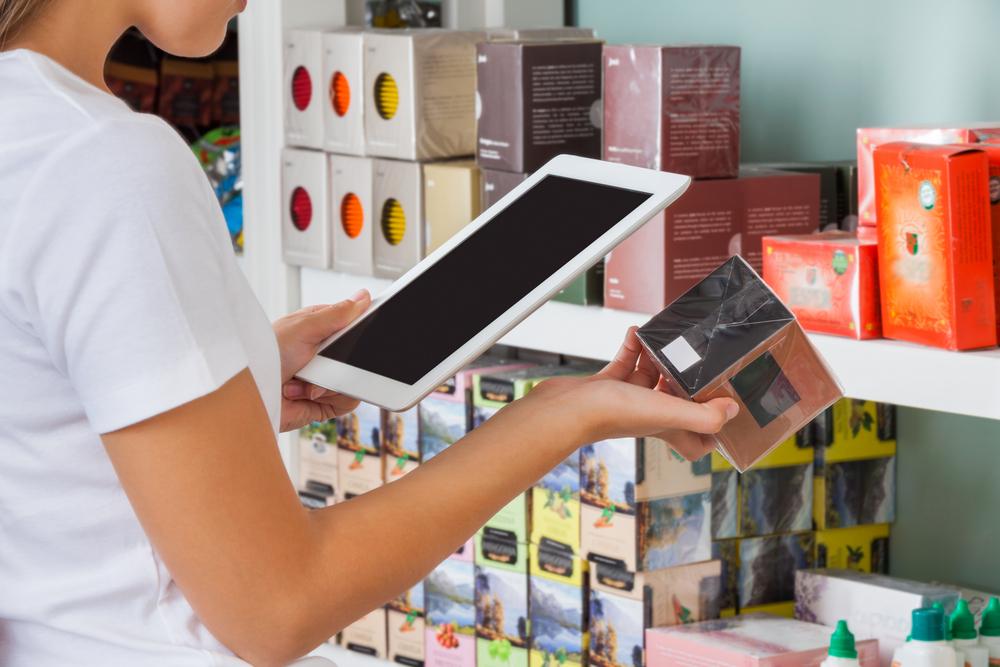MENU
Starting a Business
- Best Small Business Loans
- Best Business Internet Service
- Best Online Payroll Service
- Best Business Phone Systems
Our Top Picks
- OnPay Payroll Review
- ADP Payroll Review
- Ooma Office Review
- RingCentral Review
Our In-Depth Reviews
Finance
- Best Accounting Software
- Best Merchant Services Providers
- Best Credit Card Processors
- Best Mobile Credit Card Processors
Our Top Picks
- Clover Review
- Merchant One Review
- QuickBooks Online Review
- Xero Accounting Review
Our In-Depth Reviews
- Accounting
- Finances
- Financial Solutions
- Funding
Explore More
Human Resources
- Best Human Resources Outsourcing Services
- Best Time and Attendance Software
- Best PEO Services
- Best Business Employee Retirement Plans
Our Top Picks
- Bambee Review
- Rippling HR Software Review
- TriNet Review
- Gusto Payroll Review
Our In-Depth Reviews
- Employees
- HR Solutions
- Hiring
- Managing
Explore More
Marketing and Sales
- Best Text Message Marketing Services
- Best CRM Software
- Best Email Marketing Services
- Best Website Builders
Our Top Picks
- Textedly Review
- Salesforce Review
- EZ Texting Review
- Textline Review
Our In-Depth Reviews
Technology
- Best GPS Fleet Management Software
- Best POS Systems
- Best Employee Monitoring Software
- Best Document Management Software
Our Top Picks
- Verizon Connect Fleet GPS Review
- Zoom Review
- Samsara Review
- Zoho CRM Review
Our In-Depth Reviews
Business Basics
- 4 Simple Steps to Valuing Your Small Business
- How to Write a Business Growth Plan
- 12 Business Skills You Need to Master
- How to Start a One-Person Business
Our Top Picks
From Mall Madness to Sadness: Why Shopping Centers May Soon Be Obsolete

Table of Contents
Big brands have been struggling to vie with e-commerce companies for years, and even established, cherished businesses like Target, Macy’s and JCPenney are facing increasing challenges. It was already hard enough to compete with the ease of online shopping, and then the pandemic accelerated that trend as people made more and more purchases from home.
So what’s the future of shopping centers? And if you run a brick-and-mortar business, how can you adapt to changing consumer demands?
Why shopping centers are becoming obsolete
Experts have been predicting the demise of shopping centers for a long time now, but the COVID-19 pandemic may have put the final nail in the coffin. Many mall retailers are drowning in debt as the pandemic forced them to close their doors for months – or forever. More than 12,000 retail stores permanently closed in 2020, according to the National League of Cities. By April 2021, the number of small businesses that were open was down by more than 33% from January 2020.
Some retailers have bounced back, but it isn’t hard to see that the traditional shopping model isn’t what it was during the heyday of shopping malls in the 1980s, ’90s and early 2000s. Coresight Research estimates that 25% of U.S. malls will close by 2025. Here are just a few of the reasons why shopping centers are becoming obsolete.
1. Online purchases are easier.
Online shopping is easier than visiting a store, especially if you’re searching for an item that’s difficult to find. Even if you can’t determine the exact product name and brand of what you’re looking for, it’s typically simple to find similar products through online stores. This often makes online purchases more cost-effective and easier than traditional in-store purchases. Add in the fact that you’re not spending money on gas or risking your health by being among crowds, and online purchases become even more appealing.
2. Online shopping is more social.
Online shopping gets businesses in front of highly targeted audiences, so it’s not surprising that Facebook, Instagram, Twitter and Pinterest all now have an e-commerce aspect. For example, let’s say someone is searching Pinterest for birthday party ideas. Thousands of pins will pop up, and many of these socially shared pictures link back to an online retail store. On top of businesses getting search-driven sales, users who have shared one of these Pinterest pictures in the first place could convert into customers in the future. Plus, as products go viral on social media and online reviews guide people toward purchases, the shopping experience becomes inherently more social even without shopping in person.
3. Online stores provide unique customer service.
One of the reasons a shopper might prefer to visit a store in person is the customer service – which is why many e-retailers have tapped live chats for their online stores. Representatives are online to interact with customers and answer questions about a particular product or other concerns without needing to be face-to-face. Many online businesses also have FAQs pages where consumers can quickly get general questions answered. Customer knowledge systems allow people to find out exactly what they need without
How brick-and-mortar stores can embrace e-commerce
Brick-and-mortar stores that have successfully survived the shift to e-commerce did so by adapting. Instead of resisting this change, these companies found ways to integrate their online and offline stores and create a seamless experience for shoppers. Let’s look at some strategies to embrace e-commerce in your business.
Build an e-commerce brand.
You’ll want to develop an e-commerce brand that both complements your existing brand and sets you apart from competitors in the online space. Make sure your company’s message is consistent both in stores and on your e-commerce website. Align your product offerings while also considering which items might attract customers more as online-only or in-store-only exclusives. Continually study the trends in consumers’ online purchase habits, and be ready to adjust accordingly.
Your e-commerce website needs to comply with the ADA, the Americans with Disabilities Act. See additional legal challenges for e-commerce business owners.
Offer multiple fulfillment options.
One of the advantages of having both brick-and-mortar and e-commerce aspects to your business is that you can provide multiple fulfillment options. For instance, when customers purchase a product on your website, they can either have it shipped to their home or pick it up at your store. You can also offer curbside pickup as an added convenience. You’re fulfilling an online order but reminding customers you have a physical location too.
Use one system for everything.
You can use one comprehensive software suite to manage all components of your business even as you expand into online sales. Our review of the Oracle NetSuite CRM gives a great example of such a system. In addition to its traditional CRM features, there are enterprise resource planning tools, a CPQ (configure, price, quote) module and a web portal you can personalize for customers. It has everything you need to manage both traditional sales and e-commerce.
Get on social media.
Social media is a great way to build relationships with your customers and expose them to your products. Start by identifying which channel your target audience is using; if none of your customers are on TikTok, there’s no reason you need to be either. Once you determine the best platform, you can set up an account and begin connecting with potential customers and eventually direct them to your online and offline offerings. Don’t be discouraged if you don’t see immediate results; social media is a long game, and it takes time to build an audience. Learn more about developing an e-commerce marketing strategy.
You can also use a POS system to manage your inventory for physical and online stores. Check out our picks for the best POS systems.
How to keep your mall business thriving
Could the predicted demise of malls be overstated? Before the pandemic hastened their death, some experts argued in The Wall Street Journal and elsewhere that such fears were indeed exaggerated. Plenty of consumers still enjoy aspects of both online and in-person shopping, so the two options may continue to coexist or merge to create an omnichannel experience.
If you run a mall-based store, here are a few ways you can help it thrive:
- Create an experience for your customers. The best way to keep customers visiting your physical store is by providing an experience they can’t find online. You can host community events, offer customers drinks and snacks, and feature experts who can provide custom shopping advice to each client. Look for ways to make coming to your store a special experience.
- Implement BOPIS. “Buy online, pick up in store” (BOPIS) offers the convenience of online shopping, but customers can receive their item that same day by picking it up at your business’s brick-and-mortar store instead of waiting for it to ship. Customers who do so may be incentivized to spend more once they visit your location and see what else you have to offer.
- Provide exceptional service. Deliver outstanding customer service to your customers by ensuring your store is adequately staffed, especially during busy seasons. Make sure employees are appropriately trained to resolve any issues that come up with customers so shoppers feel good about coming back in the future. Develop relationships with clients so they prefer to deal with you directly rather than go through the impersonal process of buying something online.
- Offer in-store discounts. Offer specific in-store discounts that customers can’t use online. Provide perks if clients make a certain number of store visits. If you host a promotional event or discount window, be sure to track sales data to see if your in-store traffic increases before, during and after.
Brick-and-mortar stores such as Costco have competed with e-commerce giants like Amazon by offering unique member services and giving customers the option to buy items online and pick them up in person.
E-commerce has permanently changed the way consumers shop, and shopping malls are not what they once were. But there is still hope for mall-based and brick-and-mortar retailers. By merging the benefits of online and in-store shopping, you can create a unique experience your customers won’t forget. Get started today by checking out the best e-commerce platforms.
Sudeep Banerjee contributed to the writing and reporting in this article.








